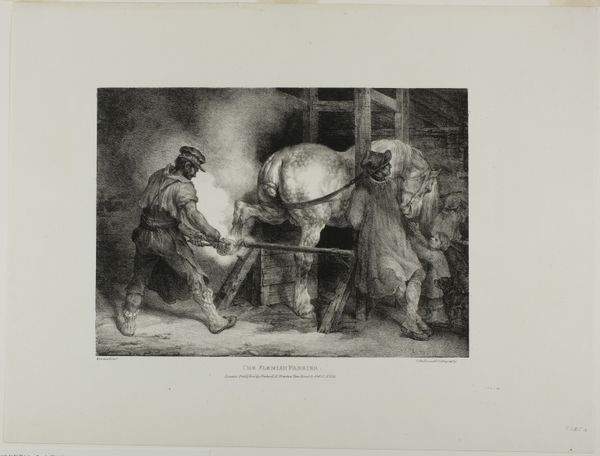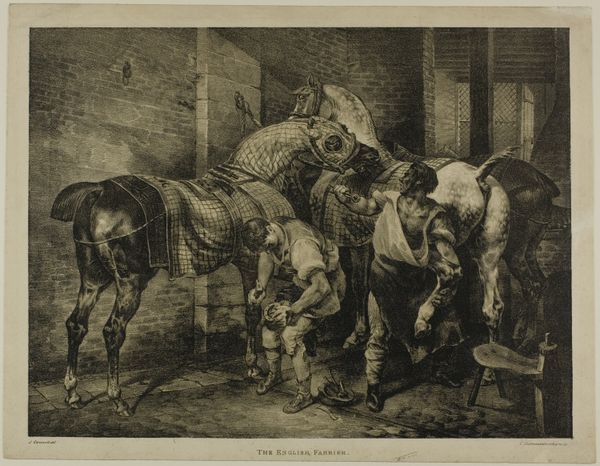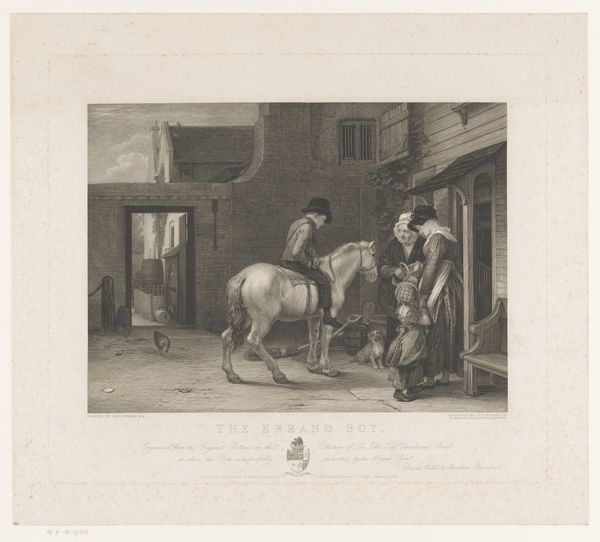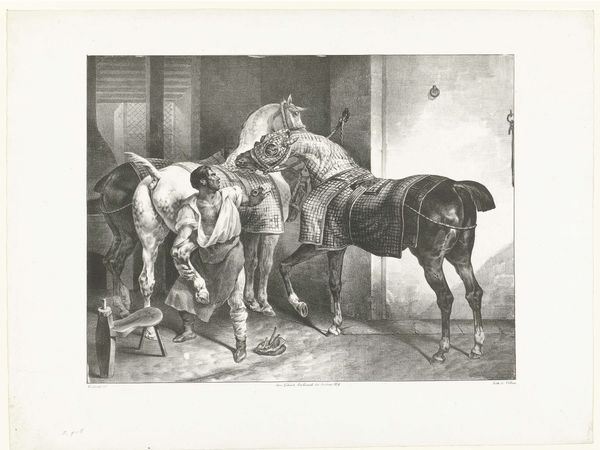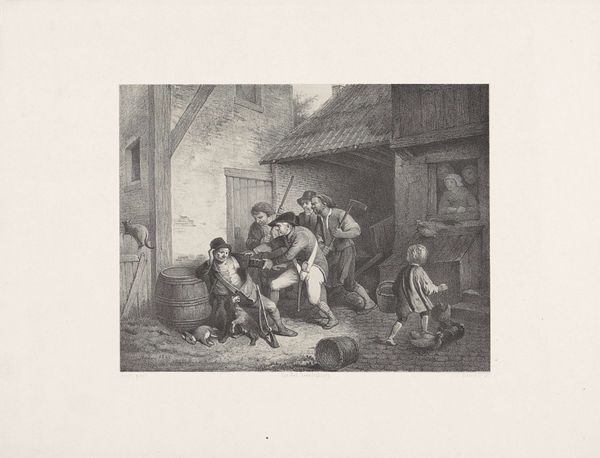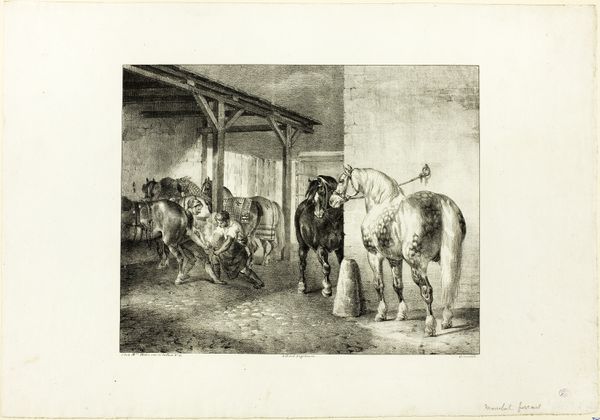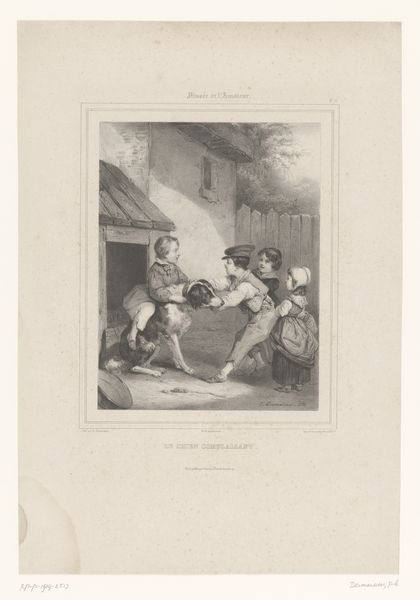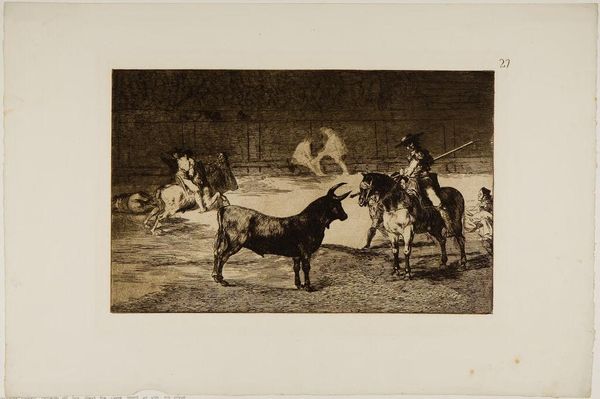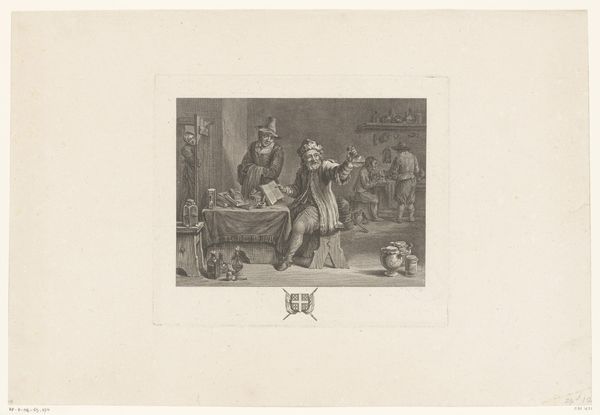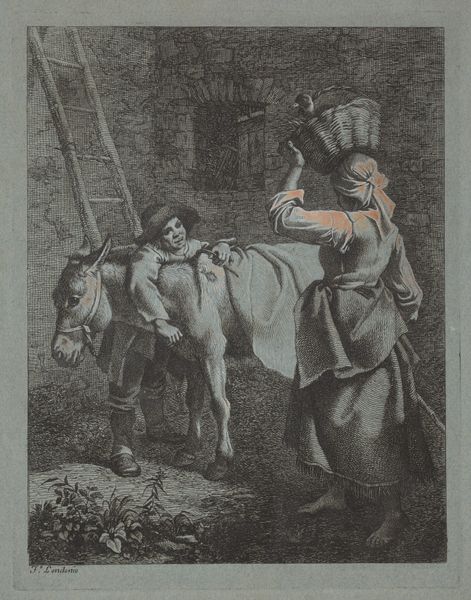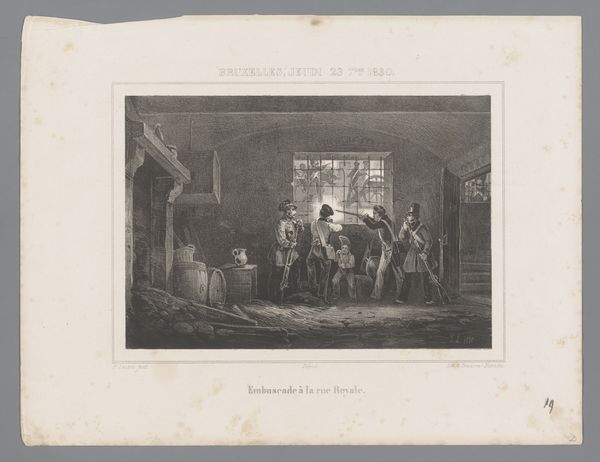
Dimensions: height 242 mm, width 323 mm, height 376 mm, width 455 mm
Copyright: Rijks Museum: Open Domain
Curator: This etching by Théodore Géricault, titled "Vlaamse Hoefsmid," or "Flemish Farrier," was created around 1822. It's currently held in the Rijksmuseum. Editor: It’s a dark, almost claustrophobic scene. The stark contrast between light and shadow creates a dramatic tension, wouldn’t you agree? Curator: Indeed. The dense concentration of labor here is key; the physicality of the farrier's trade, the straining horse, even the onlookers contribute to a visual document of 19th-century labour and class structure. Note the way Géricault has focused so acutely on the blacksmith’s body—the curve of his back, his planted feet. The production of goods hinges on this physical effort. Editor: I see echoes of social injustice and speciesism; the scene is laden with the weight of both human and animal exploitation. The horse is quite literally a beast of burden and his expression seems rather subdued, he’s surrounded by laborers and figures who may take part in the industry, almost like it is representing the collective and the price of work during the industrial era. Curator: Precisely! The etching medium itself speaks to production. Its reproducibility makes it an accessible artwork. It was intended, or so the evidence suggests, to be broadly distributed as a print. And so it invites questions about authorship and original vs. copy… it is inherently about material transformation. The farrier is transforming raw material into a product. Géricault is doing a similar activity by portraying that in an etching format. Editor: It strikes me that Géricault chooses this very mundane subject matter to make visible and to critique a whole power dynamic, I'm reminded that those outside of bourgeois classes, people in the low social strata and often of different genders and ethnicities, are those who take part and sustain many such industrial activities Curator: That interpretation, and Géricault’s intentions, remain… unresolved. Editor: Of course, as an artwork, it invites us to grapple with unresolved social questions and their manifestations in industrial professions! Thanks for spotlighting these complex implications and considerations regarding working conditions in the etching. Curator: It was crucial to pinpoint the details about labor involved in Géricault’s depiction of the “Flemish Farrier”, in terms of medium and social commentary.
Comments
No comments
Be the first to comment and join the conversation on the ultimate creative platform.
